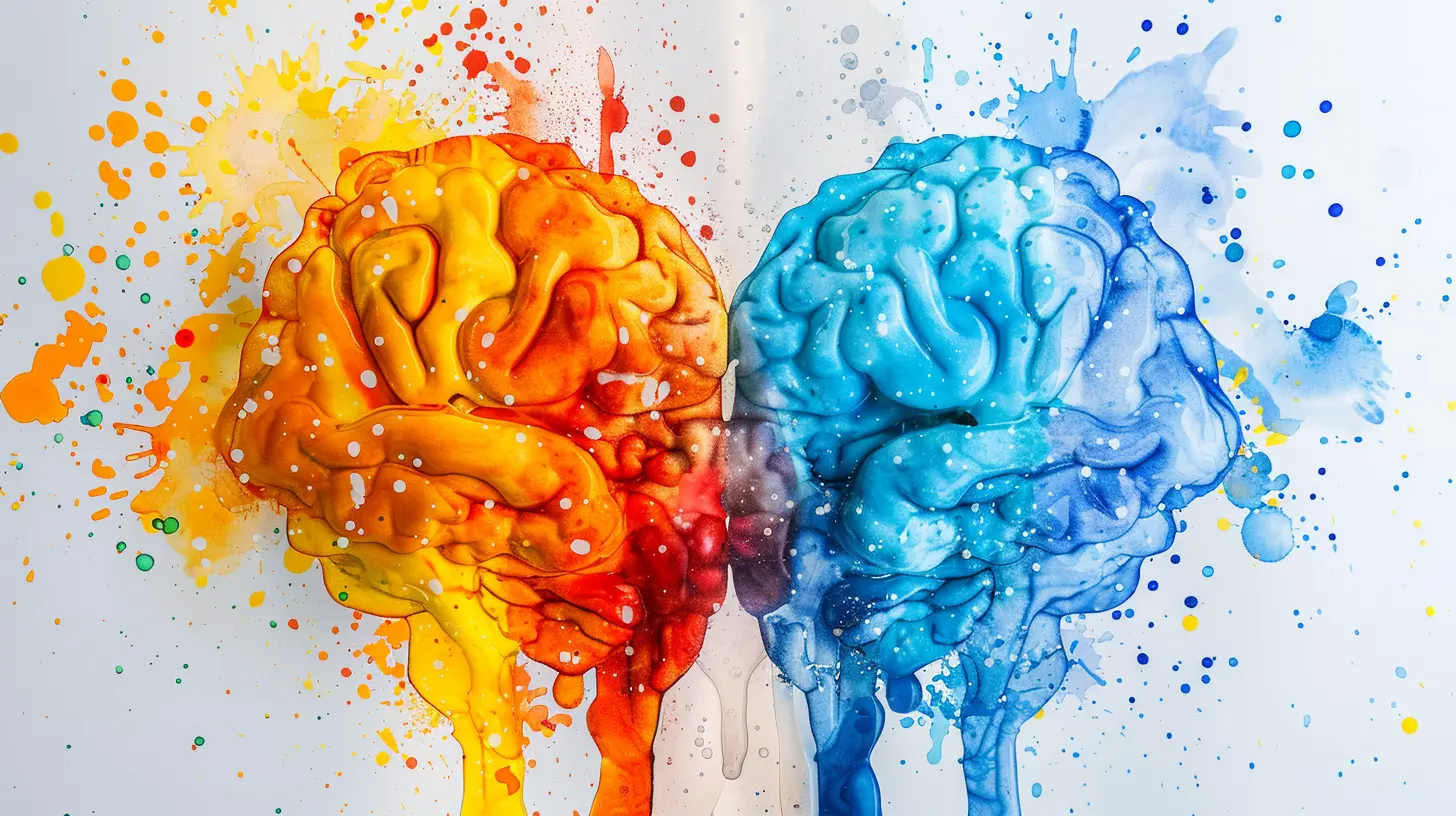The Role of Emotional Intelligence in Professional Teaching
27 July 2025
Alright, let's talk about something that doesn’t get enough air-time in education circles — Emotional Intelligence (EI). Nope, it’s not just about “being nice.” It’s that magical ingredient that can turn a decent teacher into a phenomenal one. So grab your coffee, sit back, and let’s have an honest (and kinda fun) conversation about why emotional intelligence might just be the unsung superhero in classrooms everywhere.

What Even Is Emotional Intelligence?
Let’s start with the basics. Emotional Intelligence (EI), sometimes called Emotional Quotient (EQ), is your ability to recognize, understand, manage, and respond to emotions — both yours and other people’s. That’s the dictionary-ish version.In plain speak? It’s the superpower that helps you stay cool under pressure, empathize with students, and not lose your mind when your projector crashes five minutes before class.
Daniel Goleman — kind of the rockstar of emotional intelligence — breaks it down into five parts:
1. Self-awareness
2. Self-regulation
3. Motivation
4. Empathy
5. Social skills
All of these, believe it or not, are pure gold for teachers.

Why Teachers Can’t Afford to Ignore EI
You might be thinking: “Okay cool, but isn’t teaching all about curriculum, lesson plans, and assessments?”Sure, all that stuff matters. But here’s the catch — teaching isn’t just a science; it’s also an art. And at the heart of that art is human connection.
Students Are Not Robots (Shocking, We Know)
Each child comes into your classroom with a suitcase full of emotions — joy, anxiety, frustration, excitement, you name it. Teachers who have strong EI can read the room (and read individual faces), adjust on the fly, and truly reach their students.It’s like having a secret radar for emotional weather. Sunny day? Great. Storm clouds forming? Time for some emotional umbrellas.
Classroom Management Is Basically Adulting With Kids
Managing behavior is less about being a drill sergeant and more about understanding what’s going on beneath the surface. Is the student acting up because they're bored? Anxious? Dealing with something at home?Emotionally intelligent teachers tend to respond with curiosity rather than punishment. And believe it or not, that’s way more effective long-term.

The Five Pillars of EI — And How They Show Up in Teaching
Let’s break down those five core elements of EI with some real-world classroom flavor:1. Self-Awareness: Knowing Your Triggers
Ever lost your cool over a minor classroom issue and later thought, "Whoa, where did that come from?"Self-awareness is all about understanding your emotional triggers. When you're aware of your own emotions, you’re way less likely to let them hijack your lessons — or your relationships with students.
Pro tip: Reflect after those “off” days. Why were you snippy? Overwhelmed? Sleep-deprived? Noticing patterns can seriously upgrade your game.
2. Self-Regulation: Keeping It Together When It Counts
Teaching is stressful. Let’s not dance around it.You’ve got 30 eyeballs on you. Half the class forgot their homework. Your lesson plan gets derailed by an unexpected fire drill. How do you react?
Teachers with strong EI don’t let chaos dethrone them. They breathe (literally), pivot, and keep the room calm. Think of self-regulation as your internal thermostat — it keeps things from boiling over.
3. Motivation: Staying Fired Up Without Burning Out
Motivated teachers create motivated students. But teaching is a marathon, not a sprint.Emotionally intelligent educators find meaning in the process, not just the outcomes. They celebrate small wins — like a student finally “getting it” or a smooth group activity — and keep their passion alive even when things get messy.
They also bounce back from failure faster. Because let’s face it — not every lesson will be a home run.
4. Empathy: The Ultimate Classroom Connector
This one’s HUGE.Empathy is what lets you step into a student’s shoes and say, “Wow, you’re really going through it, huh?”
It’s not about excusing behavior but understanding it. Empathetic teachers build trust, and once you’ve got that, the sky’s the limit for learning. Students don’t just need teachers — they need humans who get them.
Bonus? Empathy also makes parent-teacher meetings way less awkward.
5. Social Skills: Mastering the Art of Human Juggling
Teachers are like conductors in a very unpredictable orchestra. They juggle interactions with students, parents, colleagues, and administrators… all while trying to finish their coffee before it gets cold.Good social skills make collaboration smoother, eliminate classroom drama, and turn awkward interactions into productive conversations.
Emotionally intelligent teachers don't just talk — they connect.

Real-Life Teaching Scenarios Where EI Saves The Day
Let’s zoom in on a few relatable classroom moments and see how EI flips the script:Scenario #1: The Monday Meltdown
You’ve just started your grammar lesson when a student bursts into tears. The old-school reaction might be: “Take a walk to the nurse’s office, please.”But with emotional intelligence? You take a timeout, check in quietly, and offer them a safe space. You don’t need to fix everything — just being present often helps more than you’d think.
Scenario #2: The Parent Email From Heck
You get a scathing email from a parent at midnight. You're tempted to fire back a “well-explained” paragraph or two. But — EI kicks in.You wait. You reread. You respond the next morning with clarity, calm, and curiosity. Boom — crisis turned into connection.
Scenario #3: The Chaos Class
It’s Friday afternoon. The class is squirrelly. Nothing is sticking.Instead of fighting the current, you pull a U-turn: “Okay folks, let’s take a five-minute mindfulness break.” You shift the energy and reclaim the class.
That’s EI, baby.
The Ripple Effects: EI Doesn’t Just Help You — It Helps Everyone
Here’s something cool: When teachers model emotional intelligence, students soak it up like sponges. Seriously.They learn how to manage their own emotions, resolve conflicts, and build stronger relationships. Think of EI as emotional literacy — and you’re the author of their first lessons.
Also, schools with emotionally intelligent staff tend to have better teamwork, lower burnout, and a more positive culture overall. So yeah, it’s kind of contagious — in the best way.
How Can Teachers Grow Their EI?
Good news — you don’t need special powers. Emotional intelligence isn’t fixed like your height; it’s more like a muscle. The more you work it, the stronger it gets.Here’s a starter kit:
1. Journal It Out
End your day by jotting down your emotional highs and lows. What triggered you? What worked? It’s like a post-game analysis — but for your feelings.2. Practice Active Listening
Instead of thinking about your response while someone talks, like we all do (guilty!), try really listening. You’ll notice people open up more.3. Breathe Before You Blow Up
When tensions rise, take a beat. A deep breath. A sip of water. Anything to buy you that extra second of perspective.4. Ask for Feedback
Yep, scary, but insightful. Ask trusted coworkers or even students, “How do I come across?” Their answers might surprise you — in a good way.5. Educate Yourself
There are tons of books and podcasts on this stuff. Start with Goleman’s work or Brené Brown’s talks if you're looking for inspiration.Let’s Recap: Why Emotional Intelligence Is a Game-Changer for Teachers
So, to wrap this emotional rollercoaster up, here’s what we know:- Emotional intelligence helps teachers connect instead of control.
- It's the backbone of classroom management, student engagement, and healthy communication.
- It makes you more adaptable, more resilient, and (honestly) a lot more fun to be around.
- And the best part? It’s totally trainable.
In a world where education is often bogged down by tests, data, and paperwork, EI reminds us that at the heart of teaching — there's a human being, connecting with other human beings. And that connection? That's where the magic happens.
Ready to flex your emotional intelligence muscles? Your classroom will thank you.
all images in this post were generated using AI tools
Category:
Professional DevelopmentAuthor:

Fiona McFarlin
Discussion
rate this article
1 comments
Kova McInerney
What a fantastic read! Emotional intelligence truly transforms the classroom experience. Understanding our students' feelings not only enhances learning but also builds stronger connections. A must-have skill for every teacher!
August 5, 2025 at 6:47 PM

Fiona McFarlin
Thank you for your thoughtful comment! I'm glad you found the article impactful; emotional intelligence is indeed vital for fostering meaningful connections in education.


